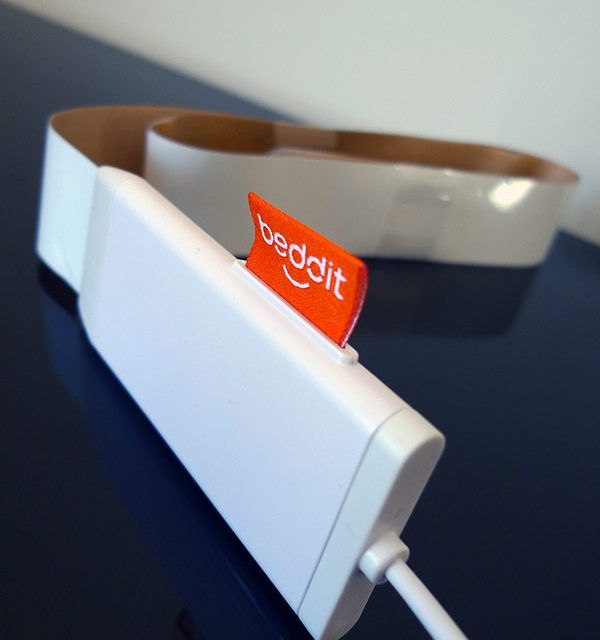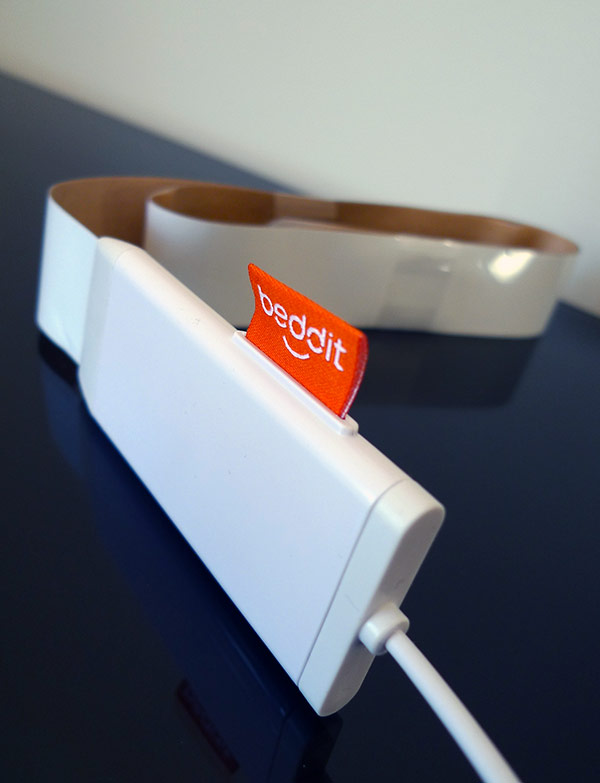 Even before Apple unveiled their HealthKit system, health monitoring and tracking devices have been steadily gaining popularity.
Even before Apple unveiled their HealthKit system, health monitoring and tracking devices have been steadily gaining popularity.
While there are numerous companies out there tracking steps, blood pressure and weight, Beddit is looking at something far closer to our hearts.
Sleep.
Read on for our review.
Way back in 2007, we reviewed the SleepTracker Pro watch and while it worked well, not everybody likes to wear watches. Beddit, the Finnish company who shares its name with its primary product, is aiming for similar functionality but with a far less obtrusive approach.
FIRST IMPRESSIONS
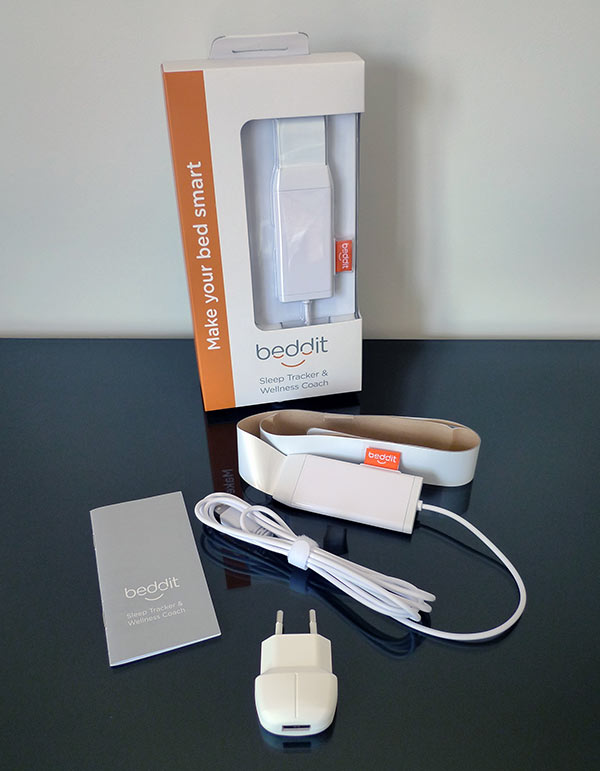 The Beddit sensor is made up of three connected components: A 30mm wide, 700mm long ribbon and an 1800mm long USB cable which are both interconnected to a 900mm x 40mm x 7mm recording/transmitting device. Along with the sensor, the Beddit package includes a (non-Australian) USB power adapter and a small printed manual.
The Beddit sensor is made up of three connected components: A 30mm wide, 700mm long ribbon and an 1800mm long USB cable which are both interconnected to a 900mm x 40mm x 7mm recording/transmitting device. Along with the sensor, the Beddit package includes a (non-Australian) USB power adapter and a small printed manual.
While the Beddit is a strange looking device with its interconnected parts, its build quality is solid and the main recording/transmitting device is both neat, well made and relatively unobtrusive. The ribbon is around a millimetre thick with an adhesive backing and glossy white in appearance. While our review units were white, Beddit also produce a black coloured unit.
SETUP AND USAGE
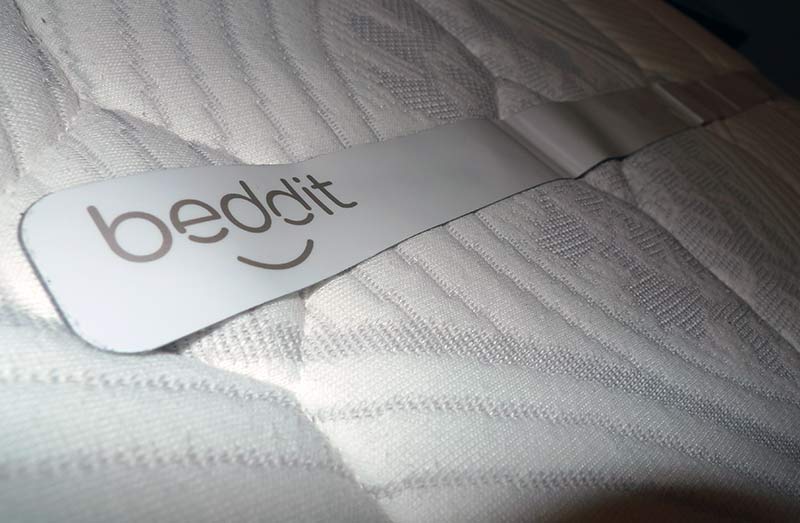 Following the easy to follow manual, we stripped our bed of all its sheets and using the preinstalled adhesive, affixed the ribbon to one side of the bed, with the recording/transmitting device hanging off to the side. As the included USB adapter wasn’t made for Australia, we pulled out an old iPod USB adapter and plugged the Beddit in ready to go.
Following the easy to follow manual, we stripped our bed of all its sheets and using the preinstalled adhesive, affixed the ribbon to one side of the bed, with the recording/transmitting device hanging off to the side. As the included USB adapter wasn’t made for Australia, we pulled out an old iPod USB adapter and plugged the Beddit in ready to go.
Well almost. To effectively monitor sleep, the Beddit needs to work in tandem with either a relatively modern iDevice or Android equivalent, running the free Beddit app. During our time with the unit, we used a combination of iPhone 5 and iPad 3 for testing.
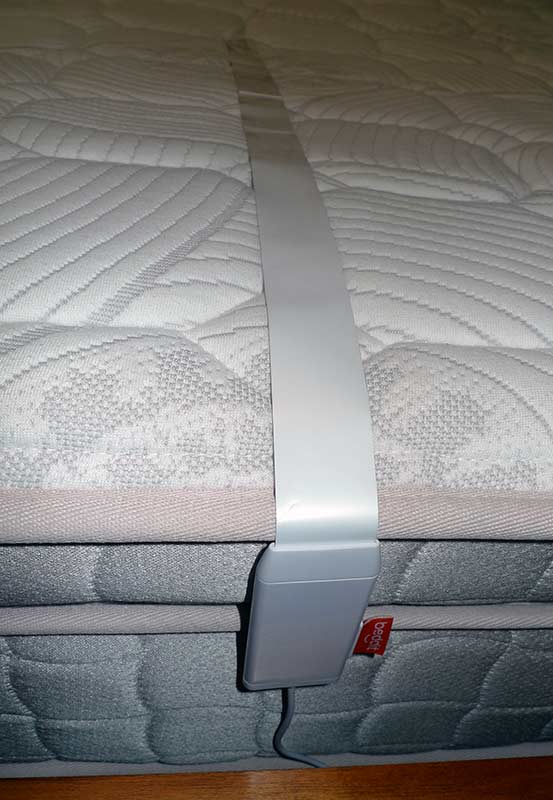 It’s worth making clear that the Beddit needs a compatible iDevice or Android device to function. And this device must remain on all night in the same room. The Beddit transfers data to your device in realtime via bluetooth and utilises your device’s microphone to listen for snoring. The App allows you to set a preferred wake up time and like the SleepTracker Pro, not only monitors and analyses your sleep but also wakes you (with your device’s speaker) during a light period in your sleep cycle.
It’s worth making clear that the Beddit needs a compatible iDevice or Android device to function. And this device must remain on all night in the same room. The Beddit transfers data to your device in realtime via bluetooth and utilises your device’s microphone to listen for snoring. The App allows you to set a preferred wake up time and like the SleepTracker Pro, not only monitors and analyses your sleep but also wakes you (with your device’s speaker) during a light period in your sleep cycle.
The App itself looks great and gamifies the data by registering a sleep score based on how you slept. It also graphs your heart rate, breathing and deepness of sleep. Snoring is also listed as are periods of wakefullness. During the course of our review the Beddit iOS App was updated twice, fixing bugs and adding Cloud backup for multi-device syncing. At any rate, development is active which is great to see.
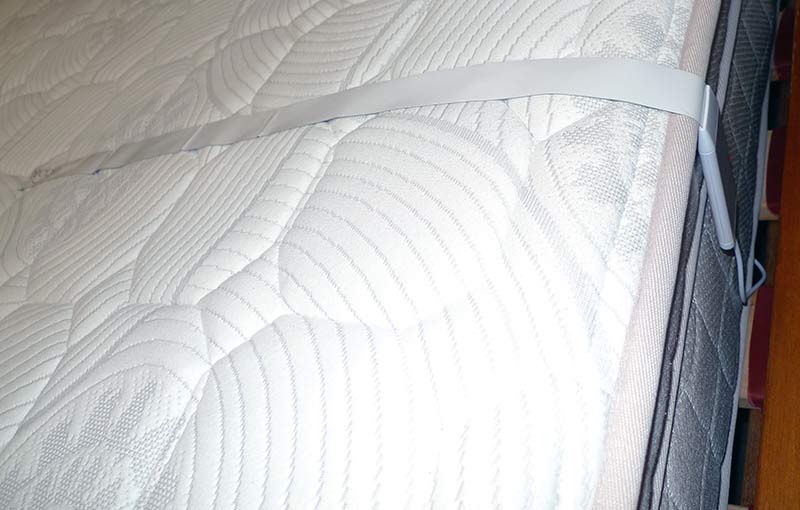 Once you have the Beddit monitor installed and the App running on your device, all you need do is make sure both the Beddit and device are paired, both have power for the night (the App insists you plug your device in) and tap “Start Sleeping.” You can then (optionally) set a wake up time and go to bed. When you wake, you simply tap “stop measuring” and view your results.
Once you have the Beddit monitor installed and the App running on your device, all you need do is make sure both the Beddit and device are paired, both have power for the night (the App insists you plug your device in) and tap “Start Sleeping.” You can then (optionally) set a wake up time and go to bed. When you wake, you simply tap “stop measuring” and view your results.
As mentioned above, the Beddit App provides a number of data sets for you to view, including an overall sleep score based on the data. Beddit data is HealthKit compatible and can be easily imported into Apple’s new health system.
Along with your raw data, the Beddit app provides helpful tips to improve the quality of your sleep. These tips can be tailored to your particular needs (insomnia, weight loss, snoring, etc.) or turned off altogether. The app also allows you to set a “Sleep time goal,” which maxes out at 9 hours, incidentally.
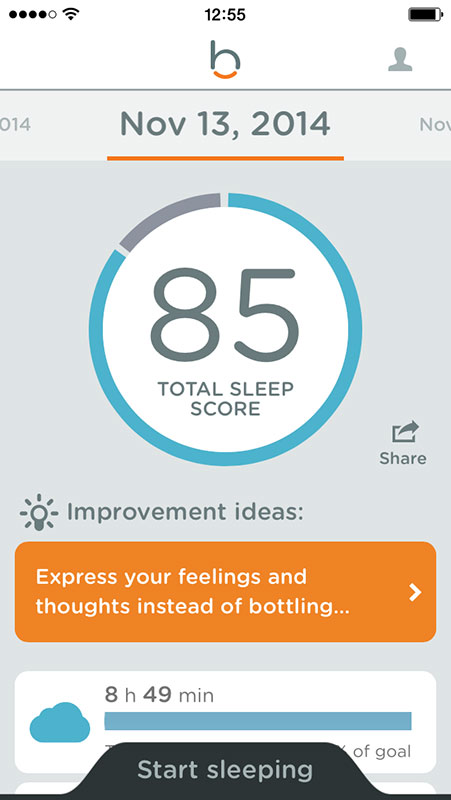 While the packaging and website insist the Beddit “should not be used to treat or diagnose medical conditions,” our experience suggests that it may be a good starting point as it does acquires a lot of data with at least some degree of accuracy. While we had no scientific way of confirm the accuracy of the data, we found that it matched what we knew about our sleep patterns. For example, if I read for twenty minutes in bed, in the morning, the Beddit would report that it took me about 25-30 minutes to fall asleep once I had hopped into bed. The App also accurately reported known breaks in sleep, ie: Getting up in the middle of the night, etc.
While the packaging and website insist the Beddit “should not be used to treat or diagnose medical conditions,” our experience suggests that it may be a good starting point as it does acquires a lot of data with at least some degree of accuracy. While we had no scientific way of confirm the accuracy of the data, we found that it matched what we knew about our sleep patterns. For example, if I read for twenty minutes in bed, in the morning, the Beddit would report that it took me about 25-30 minutes to fall asleep once I had hopped into bed. The App also accurately reported known breaks in sleep, ie: Getting up in the middle of the night, etc.
Beddit provided two units for testing and other than a wayward app update (which was fixed a few days later), we found both units to be reliable, informative and as far as we could tell, accurate. While we can’t speak to the accuracy of all data, we can report that none of the data it reported was obviously wrong.
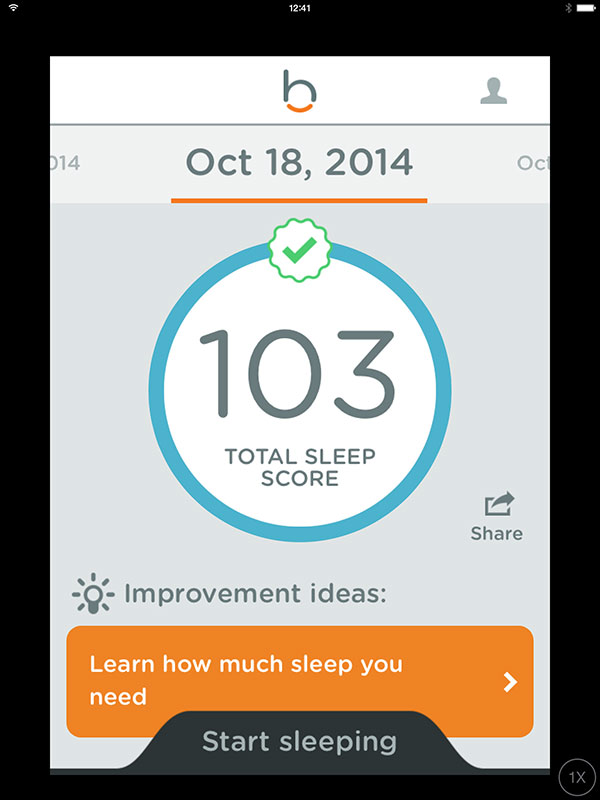 The unit was completely unobtrusive and not once during my month sleeping on top of the unit did I /feel/ the monitoring strip or in any way be bothered by it. The strip also remained in place throughout. Even when the fitted sheet came loose one night, the Beddit remained steadfast.
The unit was completely unobtrusive and not once during my month sleeping on top of the unit did I /feel/ the monitoring strip or in any way be bothered by it. The strip also remained in place throughout. Even when the fitted sheet came loose one night, the Beddit remained steadfast.
As for waking during a light sleep cycle, the Beddit appeared to do as well as it could. It has to be said that I don’t like mornings at the best of times but I did rouse when the Beddit decided and while I did occasionally ignore the alarm (the Beddit reports this!), I did get the impression I woke better with the Beddit than without, albeit with one caveat.
LOOKING FORWARD
 On the whole, the Beddit worked very well and if we ignore a quickly fixed buggy app update, we had no real issues with its use and performance. The data was both informative and as far as we could tell, accurate but we did feel the experience could do with a little tweaking.
On the whole, the Beddit worked very well and if we ignore a quickly fixed buggy app update, we had no real issues with its use and performance. The data was both informative and as far as we could tell, accurate but we did feel the experience could do with a little tweaking.
Firstly, requiring an iDevice (or Android device) to be in the room and turned on (albeit in sleep mode) all night bothered us for some reason. Even though an external device will likely always be required to view the data, we would have liked to see the Beddit be able to independently store a week or even a month’s worth of data onboard. Adding a built in microphone or speaker in future iterations would further boost its independence.
Secondly, while waking up during a light period of sleep worked quite well, listening to the same unchangeable tune each morning was less than ideal. Considering the required devices are usually filled with music, allowing the user to choose a custom track or playlist to wake up to seems like a given.
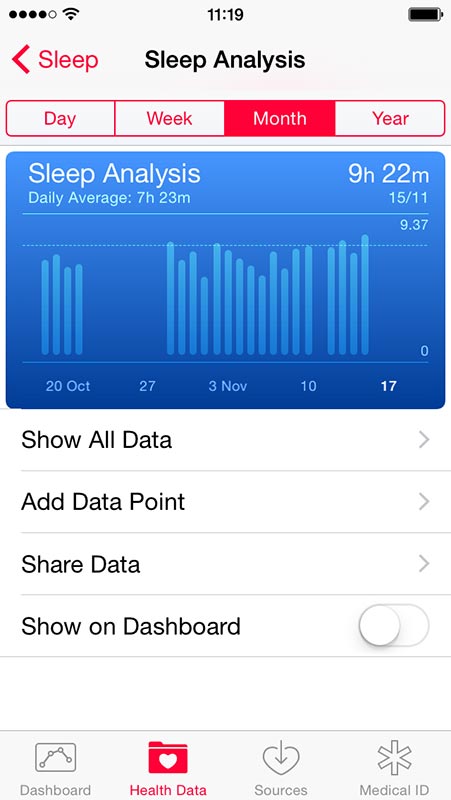 The third thing we would like to see is a way to view the data over longer time frames to better identify trends. While this is partially solved via HealthKit integration, it would be nice to see it directly in the Beddit app.
The third thing we would like to see is a way to view the data over longer time frames to better identify trends. While this is partially solved via HealthKit integration, it would be nice to see it directly in the Beddit app.
While the app improvements are all relatively small things we are sure Beddit will address in future software updates, the requirement of having a second device turned on all night is something for the future.
CONCLUSION
While it might not be obvious, we haven’t been this excited about a product since we reviewed the original Boogie Board. Like the Beddit, when we reviewed the Boogie Board we listed a bunch of improvements we wanted to see. These improvements weren’t a slight on the Boogie Board but a salute to its promise.
And in this regard, the Beddit is no different. Like the Boogie Board, the Beddit is a remarkable device that does its job well, while providing a tantalising glimpse of what the future holds.
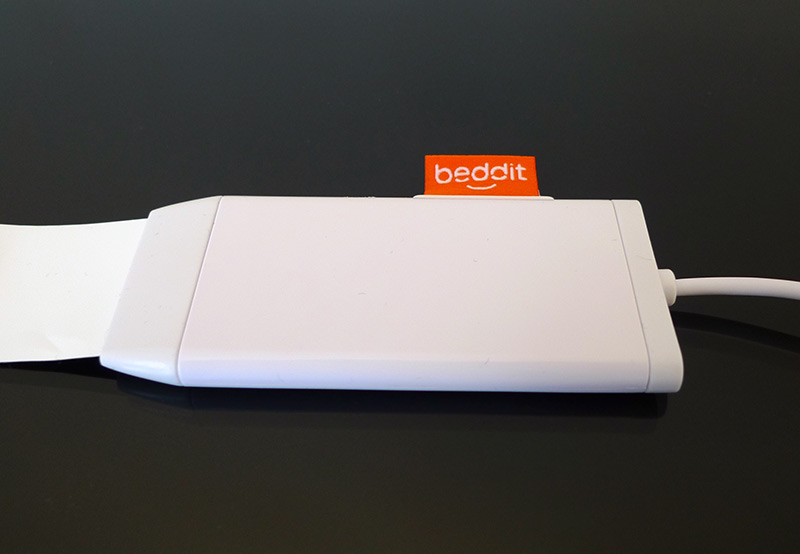 The Beddit provided informative and valuable feedback on our sleeping habits. It worked unobtrusively and (for those who don’t want to wear a watch in particular), greatly improved on the Sleeptracker experience.
The Beddit provided informative and valuable feedback on our sleeping habits. It worked unobtrusively and (for those who don’t want to wear a watch in particular), greatly improved on the Sleeptracker experience.
If you want to monitor your sleep, the Beddit is possibly the easiest and least obtrusive device you can buy to do so now. But like ImprovElectronics’s Boogie Board Sync, we think Beddit 2.0 is going to deliver some of the dreams the Beddit is currently monitoring!
The Beddit Sleep Monitor and Wellness Coach is available now for $149US. For more details including purchase information, visit Beddit’s website.


